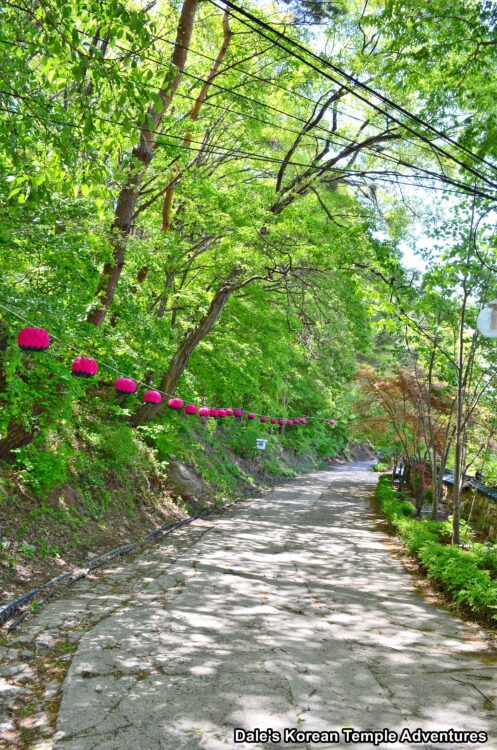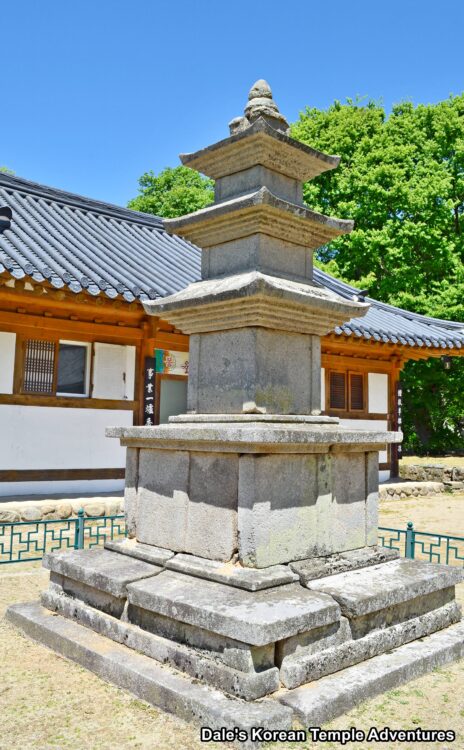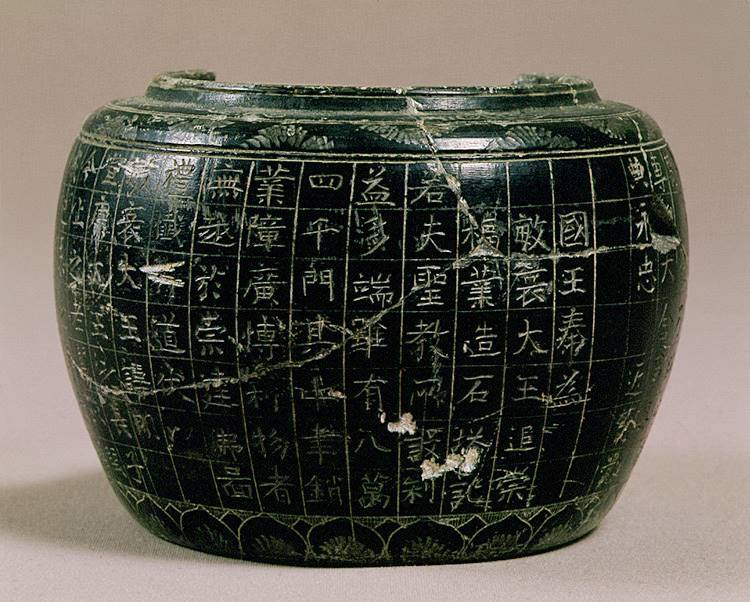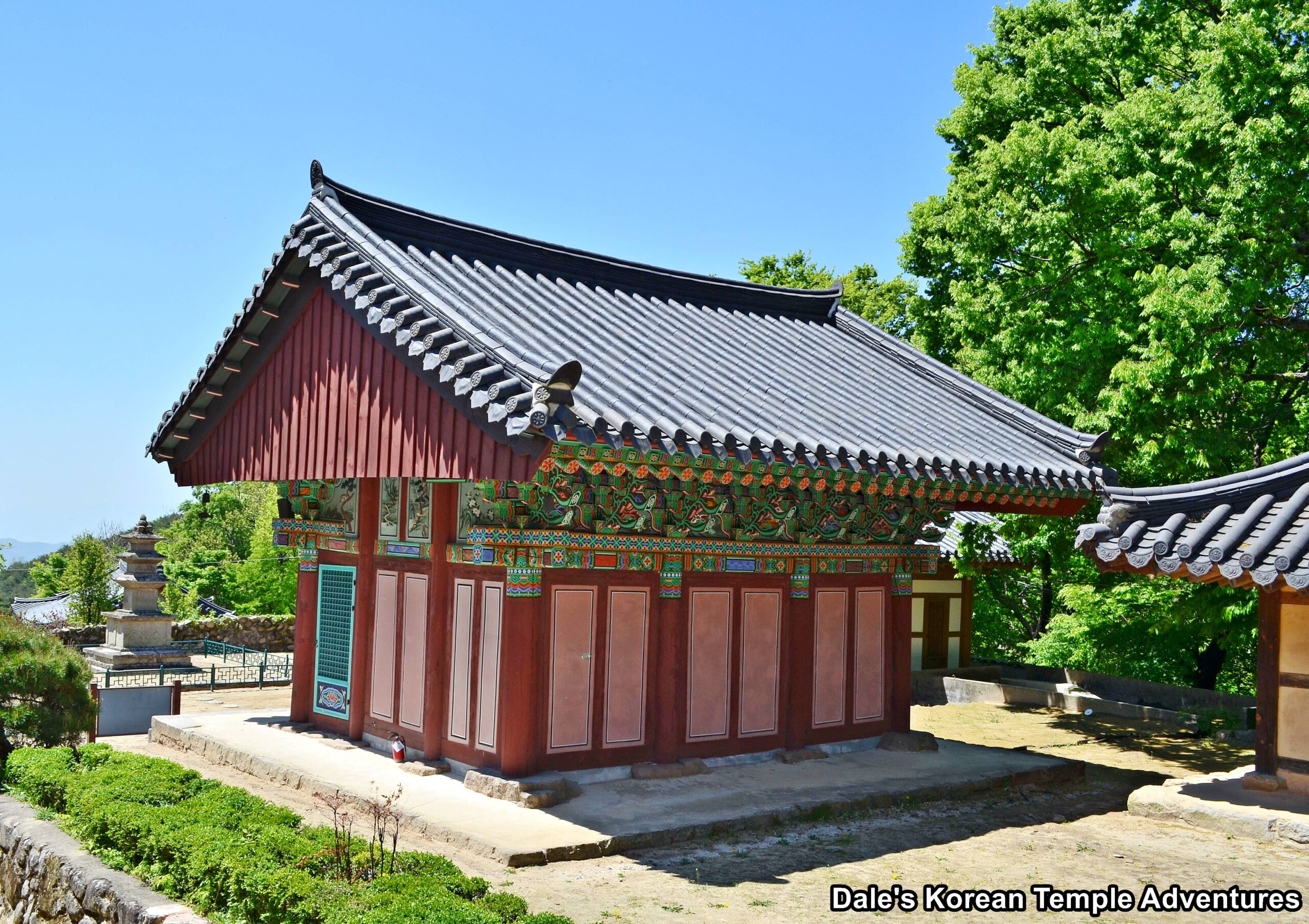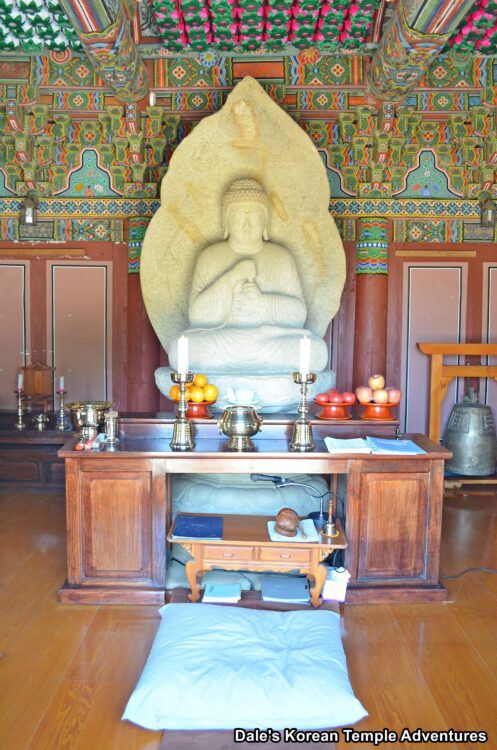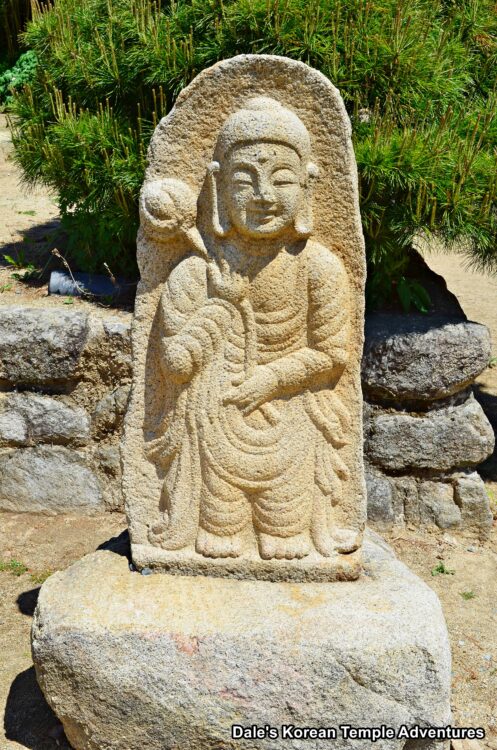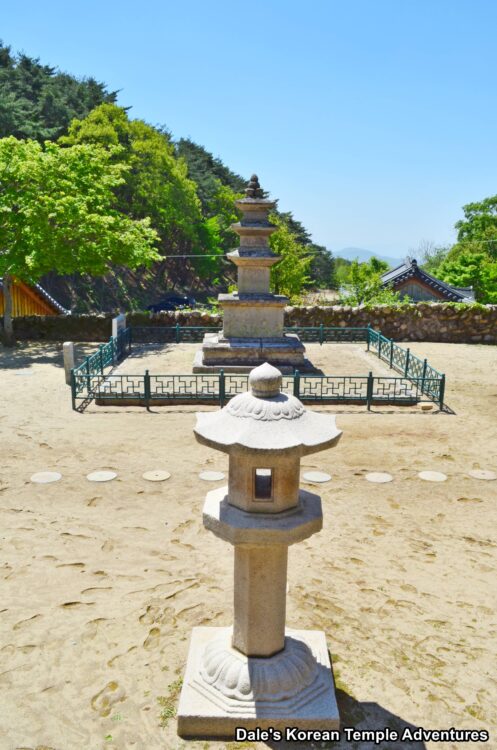Biroam Hermitage – 비로암 (Dong-gu, Daegu)
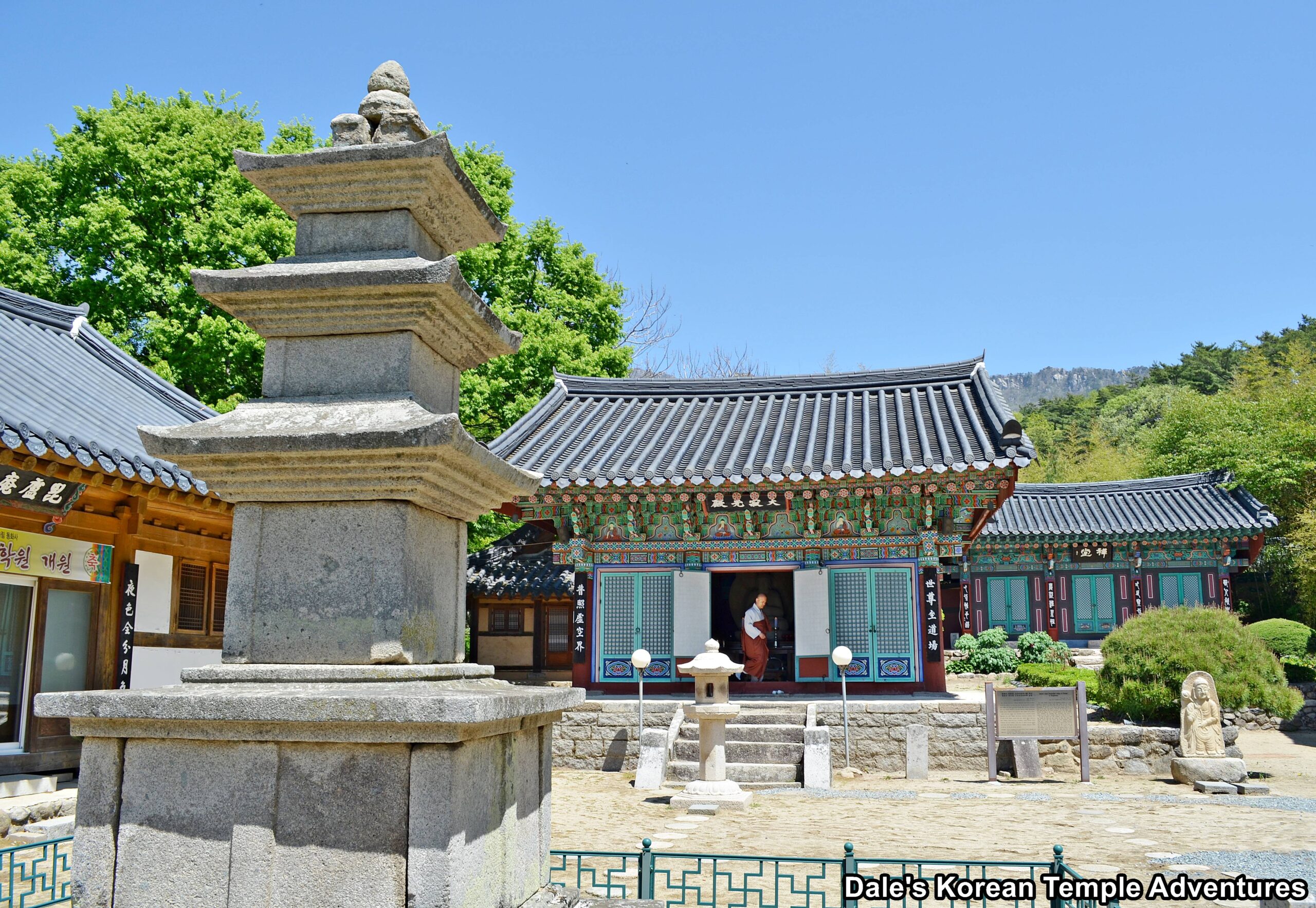
Hermitage History
Biroam Hermitage is located on the famous Donghwasa Temple grounds on Mt. Palgongsan (1193 m) in Dong-gu, Daegu. Biroam Hermitage is the closest of the hermitages directly associated with Donghwasa Temple on the main temple grounds. Biroam Hermitage was first founded in 863 A.D. during Later Silla (668 – 935 A.D.). The Donghwasa Historical Chronicles – 동화사사적기, which is a historical document that describes the history of Donghwasa Temple, has an entry about Biroam Hermitage. Interestingly, the entry describes Biroam Hermitage as Biro-jeon Hall. The Daejeokgwang-jeon Hall, which is the main hall at Biroam Hermitage, is believed to have been built in the late 18th century.
What makes Biroam Hermitage famous, though, are the three historical artifacts on and from the hermitage grounds. One is the Three-Story Stone Pagoda at Biroam Hermitage of Donghwasa Temple, which is Korean Treasure #247; another is the Agalmatolite Reliquary from the Three-Story Stone Pagoda at Biroam Hermitage of Donghwasa Temple, which was contained within the historic Later Silla-era pagoda and is Korean Treasure #741; and the final is the Stone Seated Vairocana Buddha at Biroam Hermitage of Donghwasa Temple, which is Korean Treasure #244.
Hermitage Layout
You first make your way up towards Biroam Hermitage by a paved pathway for about fifty metres. This paved pathway merges with the Donghwasa Temple parking lot, so it’s a really easy hermitage to find.
Biroam Hermitage is a compact place. It’s filled with various buildings, but only the Daejeokgwang-jeon Hall is open to visitors. The main hall is traditionally painted in dancheong colours. As for the interior, and resting on the main altar, you’ll find the Stone Seated Vairocana Buddha at Biroam Hermitage of Donghwasa Temple, which is Korean Treasure #244. This statue of Birojana-bul (The Buddha of Cosmic Energy) dates back to the 9th century. It sits on a pedestal, and it’s surrounded by a full body mandorla. Overall, it’s in good shape. The statue of Birojana-bul has a plump face with small eyes. It also has a small mouth and nose. The shoulders of the statue are rather narrow and the chest is rather flat. These features are typical of a Buddha statue of the mid-9th century. The right hand of the statue is covering the left index finger, which is known as the “Diamond Fist of Wisdom.” It’s a typical mudra, or “suin” in Korean, for Birojana-bul in Korea. The edges of the mandorla that surround the entire body of Birojana-bul has a flame design. At the top of the mandorla, there’s a Buddha triad. Also, there are eight Buddhist images arranged on either side of the mandorla. This image of Birojana-bul at Biroam Hermitage was made to commemorate the reign of King Minae of Silla (r. 838-839 A.D.) during the reign of King Gyeongmun of Silla (r. 861 – 875 A.D.). And fortunately for us, they’ve stripped away the garish white paint that used to adorn the entire statue and returned it to its natural stone surface.
Out in front of the Daejeokgwang-jeon Hall is a newer-looking stone lantern (seokdeung). And it’s in front of this stone lantern that you can see the Three-Story Stone Pagoda at Biroam Hermitage of Donghwasa Temple, which is Korean Treasure #247. The three-story stone pagoda at Biroam Hermitage rests upon a double-tiered stone base that sits upon an earthen platform. As for the body, it’s a rather typical Silla-era three-story stone pagoda with a capstone. The entire structure gradually decreases in size from bottom to top, which creates a sense of balance and stability. And the straight eaves of each story gently curve upwards at the corner. Again, this is a rather typical design of Silla-era pagodas. Of the finial that tops the pagoda, the lowest part remains. In 1966, repair work was done on the pagoda. It was at this time that it was discovered that some of the reliquaries inside the pagoda had been stolen. An inscription was also discovered at this time on the inner surface of a reliquary. This inscription revealed the age of the pagoda, which was 863 A.D. And the pagoda had also been built, like the statue of Birojana-bul inside the Daejeokgwang-jeon Hall, to the memory of King Minae of Silla.
The third, and final Korean Treasure, at Biroam Hermitage is the Agalmatolite Reliquary from the Three-story Stone Pagoda at Biroam Hermitage of Donghwasa Temple. The reliquary, unfortunately, is now housed at the Dongguk University Museum in Jung-gu, Seoul, so you’ll have to make your way up to Seoul, and not Daegu, if you want to see this amazing piece of Buddhist craftsmanship. Also, the reliquary is Korean Treasure #741. The reliquary dates back to Later Silla (668-935 A.D.), and it was discovered in the aforementioned Three-Story Stone Pagoda at Biroam Hermitage of Donghwasa Temple (T #247). Agalmatolite, or pagodite, stone is typically greyish green or greyish yellow in colour. The jar used to store sari (crystallized remains). The jar is 8.3 cm tall, and the upper diameter of the jar is 8.0 cm. The base, on the other hand, is 8.5 cm. At present, the jar is broken into four different sized pieces. And its lid is missing. The damage caused to the jar was most likely caused by grave robbers. The style of the jar was popular during the mid-9th century in the Silla Kingdom (57 B.C. – 935 A.D.). The most unique feature of this jar is that the exterior surface is painted completely in black. The exterior body of the jar is divided into box-like patterns. In total, there are thirty-eight lines of verse that fill these boxes. Each of the thirty-eight lines of verse are composed of seven characters that are directly engraved on the surface of the jar. Specifically, these verses let people know that the reliquary is directly related to the stone pagoda built for King Minae of Silla (r. 838-839 A.D.). Furthermore, the engravings detail the record of the king’s life and the construction date of the pagoda, which is 863 A.D.
Unfortunately, all of the other buildings at Biroam Hermitage are off-limits to visitors. In front of the Daejeokgwang-jeon Hall, and the historic three-story pagoda, are the monks quarters. An to the immediate right of the Daejeokgwang-jeon Hall are the monks facilities like the kitchen.
How To Get There
From the Seobu Intercity Bus Terminal in Daegu, you’ll need to take the subway, line #1, that heads towards Anshim and get off at Ahyanggyo Station. From here, take Express Bus #1. The ride will take about thirty-five minutes, and it brings you right to Donghwasa Temple. Past the main gate, and up the temple road, you’ll get to the temple parking lot. From the temple parking lot, instead of heading straight towards Donghwasa Temple, hang a right towards a paved pathway. There are a couple small signs pointing you towards Biroam Hermitage.
Overall Rating: 4/10
After visiting one of Korea’s major temples in Donghwasa Temple, you’ll naturally be a bit underwhelmed by the compact Biroam Hermitage. However, with that being said, there are a couple reasons that you might want to visit Biroam Hermitage, while you’re in the area. And both of those reasons are Korean Treasures. The first is the amazing Stone Seated Vairocana Buddha at Biroam Hermitage of Donghwasa Temple (T #244), and the other is the Three-Story Stone Pagoda at Biroam Hermitage of Donghwasa Temple (T #247). Both of these amazing stone artifacts date back to 863 A.D., and they give a visitor a glimpse back into Korea’s Buddhist past.
